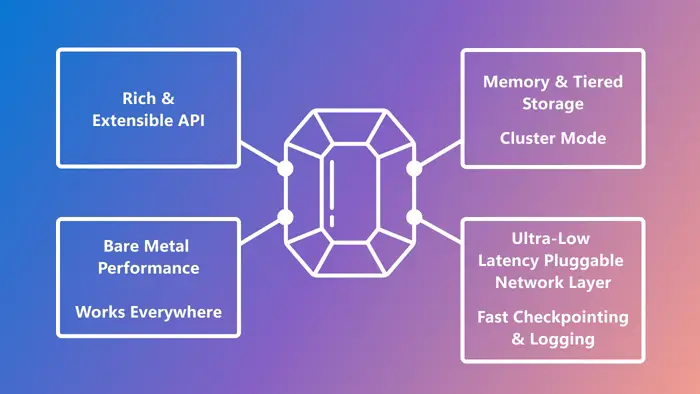The ongoing increase in demand for data storage mechanisms and advancements in web applications and services need new technologies to build on them. Microsoft researchers have come up with Garnet, a new cache-store system after working for nearly a decade on it. The primary aim of Garnet is to accelerate applications and services.

Microsoft introduces Garnet to accelerate applications and services
Garnet, a new cache-store system from Microsoft is termed to have more advantages than the legacy cache-stores. It has already been deployed into various products of Microsoft such as Windows & Web Experiences Platform, Azure Resources Manager, and Azure Resource Graph. Microsoft has just made Garnet available as an open-source cache store to enable the developer community to build on its capabilities.
Garnet re-thinks the entire cache-store stack to perform storage interactions which inherits a shared memory design inspired by ShadowFax. From receiving packets on the network to parsing and processing database operations to performing storage interactions, Garnet builds on the research of over a decade.
Some of the unique benefits offered by Garnet are:
- It adopts the RESP wire protocol that enables the use of Garnet from an unmodified Reids client, which is available in most programming languages.
- It offers much better scalability and throughput with multiple client connections that lead to cost savings in large apps and services
- Garnet comes with better client latency at the 99th and 9909th percentiles.
- It is cross-platform, extensive, and modern which is based on the .NET technology that is designed to be easy to develop without sacrificing the performance.
- Garnet supports a wide range of APIs enabling a lower bar for custom extension development.
- Garnet is faster than the legacy cache stores as it uses a fast and pluggable network layer.
Microsoft, in its blog about Garnet, included some tests and use cases of Garnet. They will continue to share more details in the future and expect the open-source community to build on it, make APIs, and unleash its potential to scale cloud computing services.